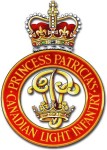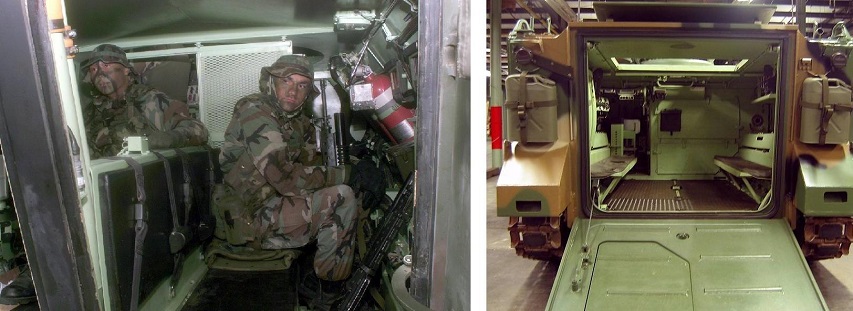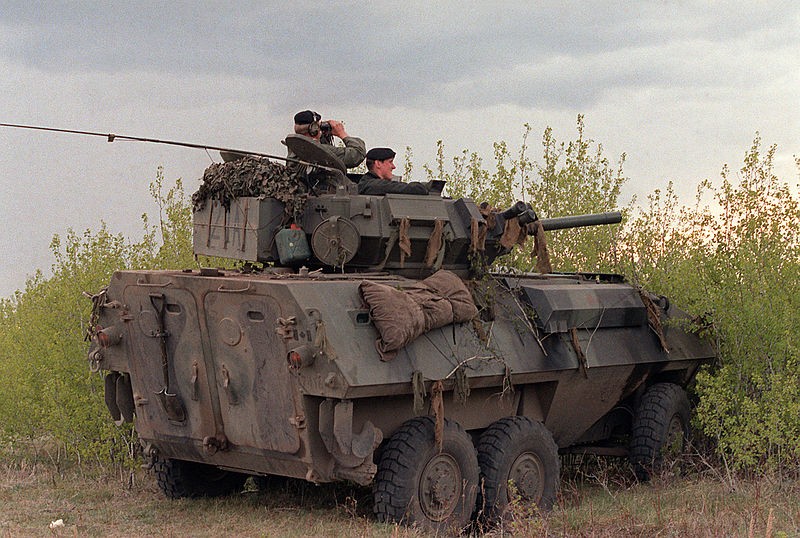My old regiment gets a bit of media attention, this time from the Orangeville Banner, as Chris Vernon goes along on a spring weekend exercise with the Lorne Scots:
As my handler Lorne Scot Master Corporal Christopher Banks drove through the gates of the 4th Canadian Division Training Centre, I was overcome with a familiar anxiety.
The centre, known by soldiers simply as Meaford, is approximately 17,500 acres of dense bush, limestone cliffs, open meadows, a lake and 22 kilometres of Georgian Bay shoreline. I spent two months here for basic training in the summer of 2005 and at age 35, I believe I was the second oldest recruit.
Soldiers in 32 Brigade Group complete their basic training at Meaford, other career courses and perform several weekend exercises on the base throughout the year, and every fresh-faced private in 32 Brigade knows the anxiety I felt, even now as a civilian, as Banks drove us through the gate.
You see, there is a certain “suckage factor” to Meaford.
“Welcome to the Meaford weather machine,” said Banks, an inside reference among soldiers that refers to the fact that it can be sunny on one side of the base while on the other side it can rain for hours while you are out on a foot patrol.
There’s also poison ivy, a rumoured ghost, mosquitos, and large ruts left in the ground from the 1940s when the army used the base as a tank range. These ruts have sent many recruits home with broken and sprained ankles, not to mention broken dreams, as the injured troop will have to wait till next year to complete basic training.
Headquartered in Toronto, 32 Brigade Group is mostly an infantry brigade consisting of more than 2,400 soldiers in 12 reserve units based in Toronto, Aurora, Barrie, Brampton, Georgetown, Oakville, Mississauga, Owen Sound, Brantford, Simcoe, St. Catharines and CFB Borden. It also has two reconnaissance regiments, two field artillery regiments, a field engineer regiment, six infantry battalions and a communication (signals) unit.
Banks, who did tours in Afghanistan and Bosnia, drives us down a pothole-riddled dirt road. I recognize the road. It’s where I jogged every day between seven and 10 kilometres at 5 a.m. while on basic training.
Banks is taking me to a Forward Operating Base (FOB) where approximately 266 infantry reservists are camped out.
“We are doing raids. Offensive training. When they (soldiers) arrived last night there was no rest. We pushed them across that line of departure at 5 a.m.,” said Lieutenant Colonel Bruce Mair from inside a command post tent where officers are milling about and looking over maps.
Reservists are part-time soldiers who serve generally one night a week, one weekend a month and a few weeks in the summer. Mair has been a reservist for 29 years and in the civilian world serves as a police officer.
Reserve units primarily respond to domestic situations, like ice storms or blackouts. However, they are trained for combat and many members have gone overseas to serve with the regular force in Bosnia and Afghanistan.







